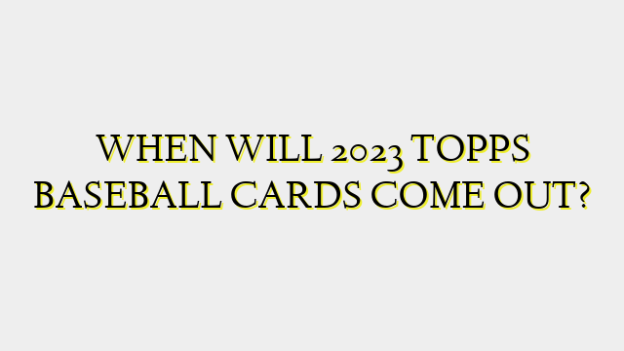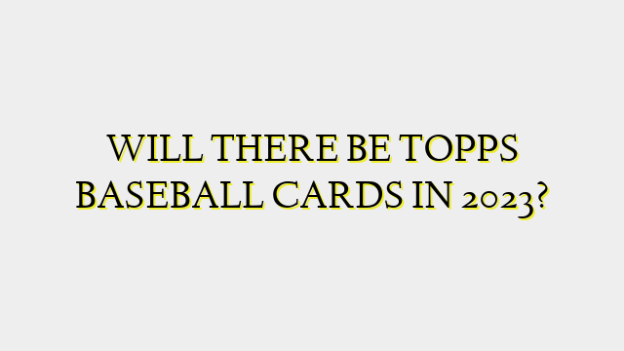Predicting the future value of baseball cards is difficult as it depends on many complex factors, but there are some reasons to think they may continue increasing in value long-term. Baseball card values are influenced primarily by supply and demand. As long as demand remains strong even as new supplies become more limited over time, values should trend up.
On the supply side, baseball card production peaked in the late 1980s and early 1990s during the junk wax era when billions of cards were mass produced. While some new sets are still issued annually, production is a fraction of what it once was. As these abundant older cards slowly work their way out of circulation through loss or damage over decades, their availability will dwindle. Combined with the fact that no new notable stars from that era are still active keeping interest high, glutted sets like 1987 Topps or 1989 Upper Deck are unlikely to see much new demand.
Constraints on new supplies being introduced to the market long-term creates scarcity which tends to drive up prices. Meanwhile, aging cards are lost or damaged every year further reducing circulating quantities. After a century of card production, many vintage cards from the pre-war and early post-war eras leading up to the 1950s are extremely rare. Premiums will always be paid for the rarest of the rare cards that survive in high grades.
On the demand side, interest in baseball cards has proven to be more durable than many predicted after the 1990s crash. While it may not be at the feverish peak of the late 80s and early 90s, ongoing interest from casual and serious collectors provides a baseline demand. Younger generations exposed to cards through parents or the increased accessibility of the internet, YouTube and social media are also driving new interest. Nostalgia plays a role for cards that remind older collectors of their childhood.
As long as Major League Baseball and the sport itself remains popular in America, interest in classic baseball memorabilia like cards will likely be maintained. Breakthrough stars in the game also create new demand for their particular rookie cards which spike in value. Players enshrined in the Baseball Hall of Fame see increased interest as well. International interest in the game and cards is also on the rise.
Grading and authentication services have instilled greater consumer confidence, helping maintain liquid markets. Third party certification of condition and authenticity allows collectors to purchase valuable vintage cards with more assurance. Population reports track the number of high graded examples known to exist, giving collectors a better sense of rarity. This transparent data makes cards better long-term collectibles compared to some other sports.
If demographic trends hold, a growing population should equate to more potential collectors entering the market even as others age out. And while digital platforms have presented competition, they also tend to bring more people into the card collecting hobby by lowering barriers to entry. Overall baseball’s staying power suggests ongoing multi-generational interest in related memorabilia like cards.
Of course, unpredictable black swan events could undermine future values, like an economic depression reducing discretionary spending on cards. Another industry scandal involving counterfeits could shake confidence, although better countermeasures now exist. There’s also no guarantee interest won’t wane more sharply in future generations less connected to baseball’s storied history.
Still, by weighing these factors—dwindling supplies due to the natural process of circulation losses; population growth increasing the number of potential new collectors; baseball’s durability as America’s pastime; the permanence of cards as collectibles linked to beloved players and moments in the game’s history—the long-term prospects for baseball cards retaining and increasing their value seem fairly favorable. Stable buying and selling markets validate ongoing collector confidence as cards are treated more like investments than disposable trivia. Prices for the most coveted vintage pieces will likely continue their historical rise beyond inflation when scarcities are measured in single digits worldwide.
While predicting future values inherently involves uncertainty, more evidence suggests baseball cards remain worthwhile long-term collectibles based on the sport’s popularity, constraints on new card supplies being introduced, and interest propelled by nostalgia, research and discrete scarcity. As long as baseball endures for generations to come, its cards issued over more than a century preserving moments from the game will stay relevant to collectors. And as supplies gradually diminish in relation to any increases in demand, the predictable result would be upward pressure on values—favoring the opinion that on balance, baseball cards will continue increasing in value if held as long-term collectible investments.


